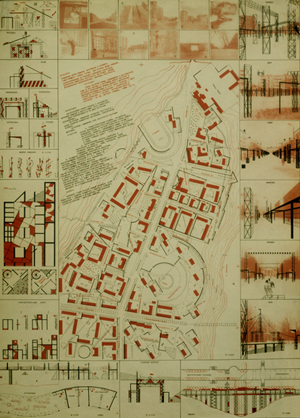 |
Avvakumov Y., SAKB MARKhI
City-Club
1984
Moscow Art Center
The problem: The ordinary forms of communication between people are hindered by the existing amorphous planning and numerous functionally undefined spaces, which are typical of major present-day residential districts.
The situation: The area of Nagornaya Street in south Moscow took shape in the 1960s. Two avenues and a ravine bound it. The population is 30,000, and the area is I km2.
The concept: A "club/neighborhood" is proposed as an alternative to the "bedtown zone". The idea is developing in two directions: First, the objective is to identify and model typological urban spaces to provide psychological comfort for the modern city-dweller; Second, the objective is to develop such spaces and provide them with such diverse functions as city-dwellers themselves will see fit.
The means: The drawings show several options of how a network of such clubs can be created, how they can emerge and develop independently of each other and how, afterwards, an architect/observer can give them rational forms.
The conclusion: The emergence of a stylistically integrated ensemble: a "club/neighborhood" consisting of "rooms" (squares and yards, streets and alleys) complete with "furniture" (urban design objects).
|

